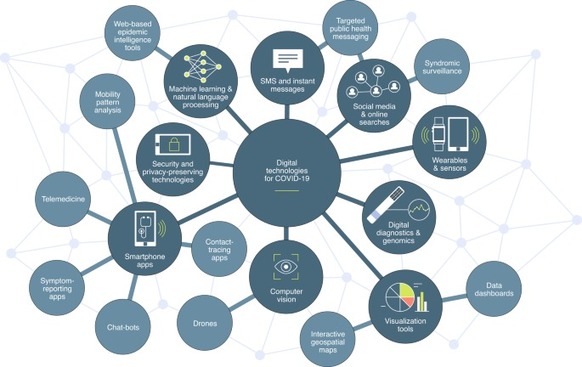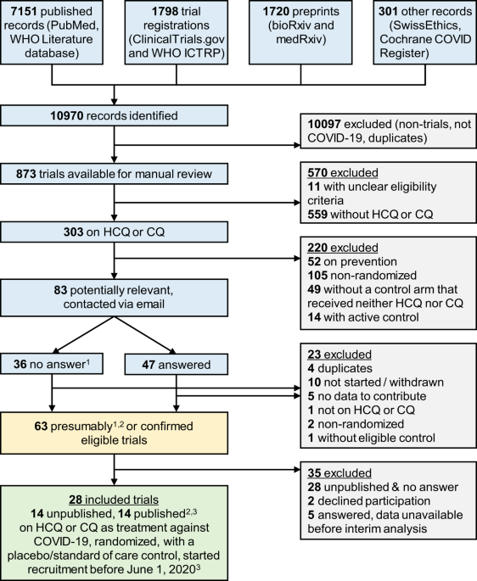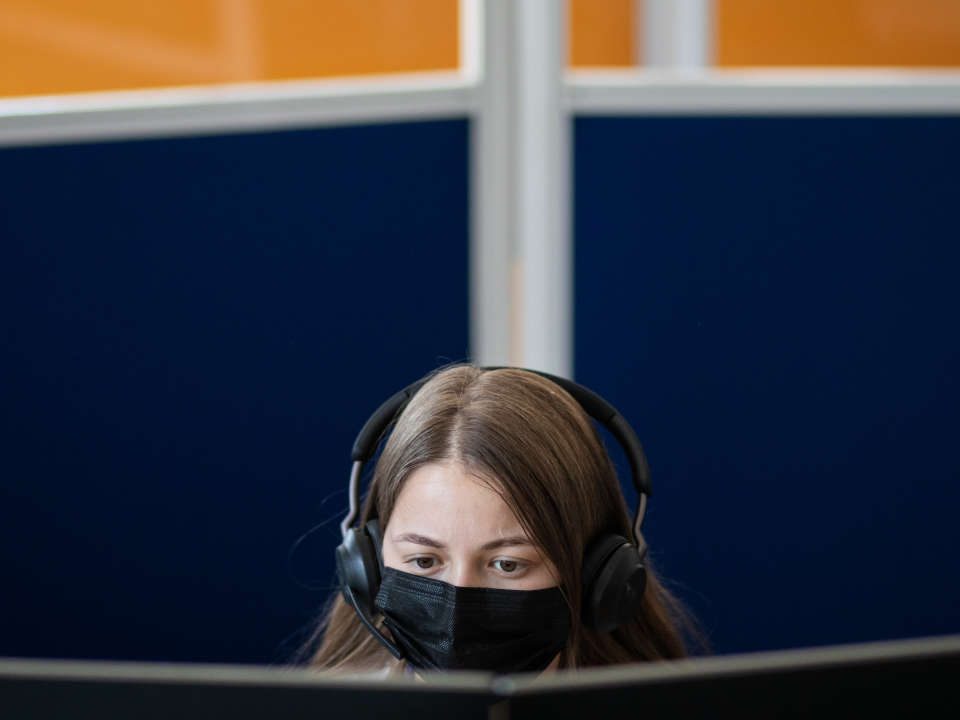Pharmageek

Could wearable data be useful in the early detection of respiratory infections? A new study by Tel Aviv University aims to find out.
Lire l'article complet sur : www.garmin.com
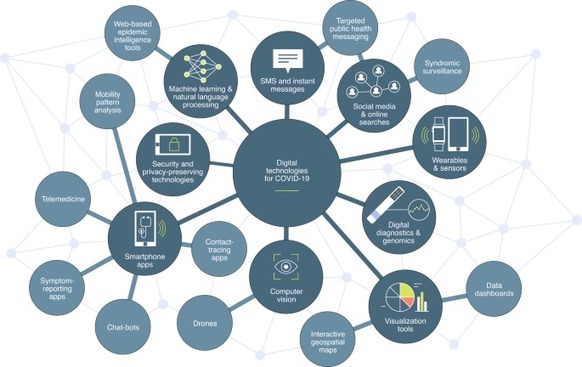
Digital technologies are being harnessed to support the public-health response to COVID-19 worldwide, including population surveillance, case identification, contact tracing and evaluation of interventions on the basis of mobility data and communication with the public. These rapid responses leverage billions of mobile phones, large online datasets, connected devices, relatively low-cost computing resources and advances in machine learning and natural language processing. This Review aims to capture the breadth of digital innovations for the public-health response to COVID-19 worldwide and their limitations, and barriers to their implementation, including legal, ethical and privacy barriers, as well as organizational and workforce barriers. The future of public health is likely to become increasingly digital, and we review the need for the alignment of international strategies for the regulation, evaluation and use of digital technologies to strengthen pandemic management, and future preparedness for COVID-19 and other infectious diseases. The COVID-19 pandemic has resulted in an accelerated development of applications for digital health, including symptom monitoring and contact tracing. Their potential is wide ranging and must be integrated into conventional approaches to public health for best effect.
Lire l'article complet sur : www.nature.com
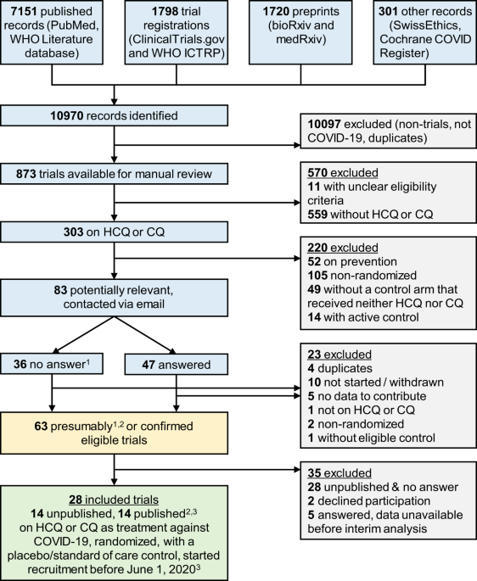
Substantial COVID-19 research investment has been allocated to randomized clinical trials (RCTs) on hydroxychloroquine/chloroquine, which currently face recruitment challenges or early discontinuation. We aim to estimate the effects of hydroxychloroquine and chloroquine on survival in COVID-19 from all currently available RCT evidence, published and unpublished. We present a rapid meta-analysis of ongoing, completed, or discontinued RCTs on hydroxychloroquine or chloroquine treatment for any COVID-19 patients (protocol:
https://osf.io/QESV4/
). We systematically identified unpublished RCTs (ClinicalTrials.gov, WHO International Clinical Trials Registry Platform, Cochrane COVID-registry up to June 11, 2020), and published RCTs (PubMed, medRxiv and bioRxiv up to October 16, 2020). All-cause mortality has been extracted (publications/preprints) or requested from investigators and combined in random-effects meta-analyses, calculating odds ratios (ORs) with 95% confidence intervals (CIs), separately for hydroxychloroquine and chloroquine. Prespecified subgroup analyses include patient setting, diagnostic confirmation, control type, and publication status. Sixty-three trials were potentially eligible. We included 14 unpublished trials (1308 patients) and 14 publications/preprints (9011 patients). Results for hydroxychloroquine are dominated by RECOVERY and WHO SOLIDARITY, two highly pragmatic trials, which employed relatively high doses and included 4716 and 1853 patients, respectively (67% of the total sample size). The combined OR on all-cause mortality for hydroxychloroquine is 1.11 (95% CI: 1.02, 1.20; I² = 0%; 26 trials; 10,012 patients) and for chloroquine 1.77 (95%CI: 0.15, 21.13, I² = 0%; 4 trials; 307 patients). We identified no subgroup effects. We found that treatment with hydroxychloroquine is associated with increased mortality in COVID-19 patients, and there is no benefit of chloroquine. Findings have unclear generalizability to outpatients, children, pregnant women, and people with comorbidities. Hydroxychloroquine and chloroquine have been investigated as a potential treatment for Covid-19 in several clinical trials. Here the authors report a meta-analysis of published and unpublished trials, and show that treatment with hydroxychloroquine for patients with Covid-19 was associated with increased mortality, and there was no benefit from chloroquine.
Lire l'article complet sur : www.nature.com

Complémentaire du « contact tracing » classique, le traçage rétrospectif des contacts, testé depuis la fin mars dans deux départements, se révèle efficace pour casser les chaînes de contamination.
Lire l'article complet sur : www.lemonde.fr



